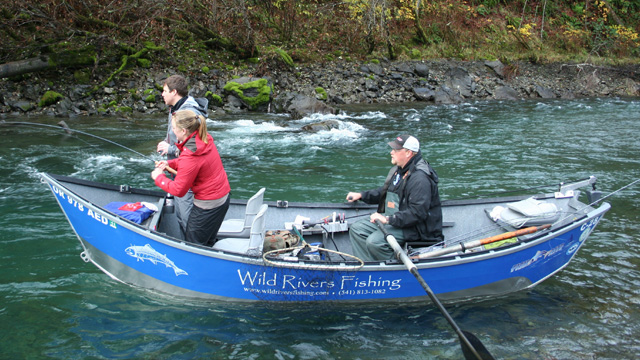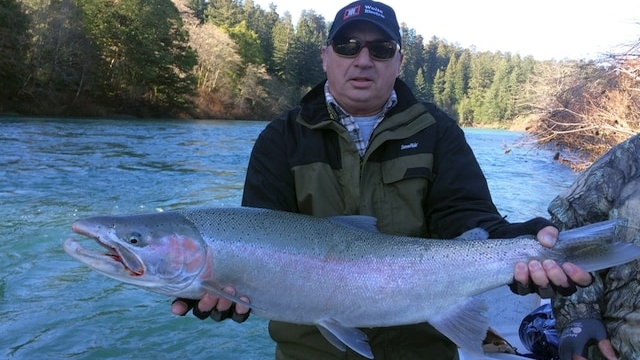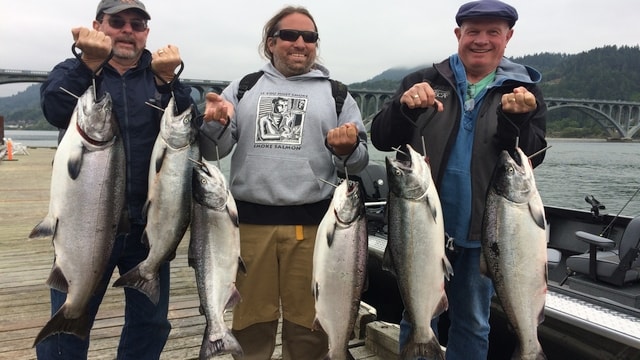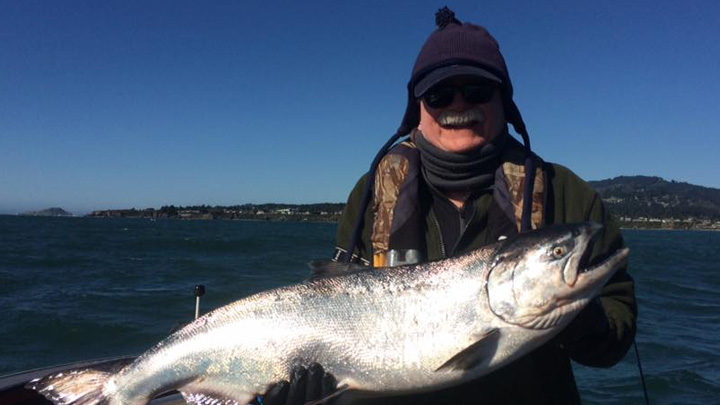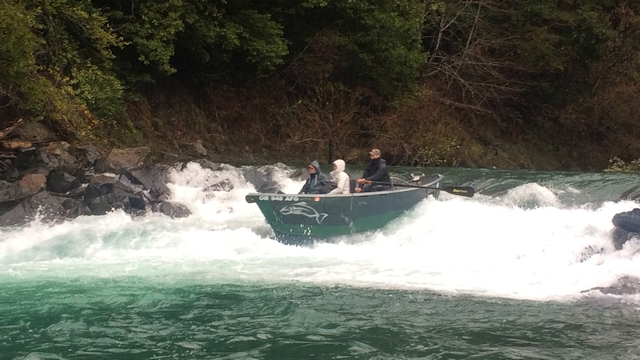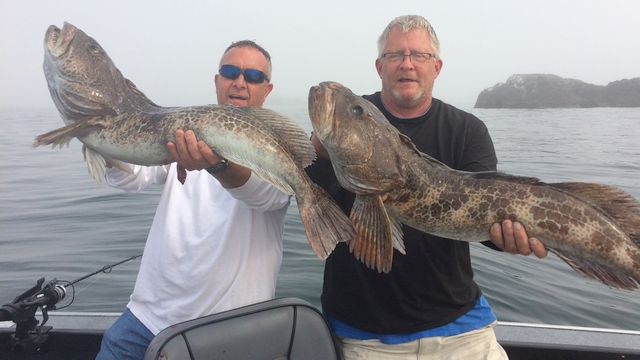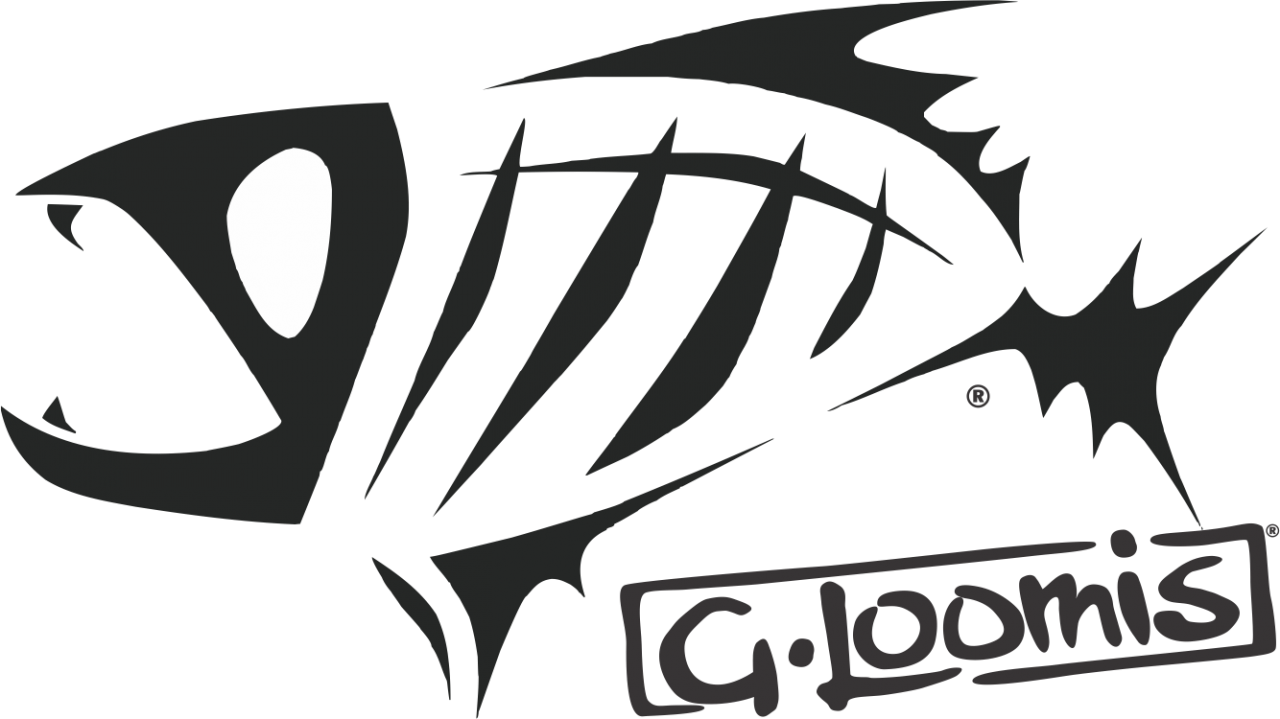10 tips to catch more and bigger Halibut
This article appeared in the June 2008 issue of Fish Alaska Magazine
Ten minutes after our lines hit the bottom, one of the rods on the left side of the boat began that familiar tap, tap, tap. A few second later the line pulled tight, burying the rod tip. Our first halibut of the day was hooked.
While halibut are abundant throughout Alaska, there are several tricks that can help anglers catch more fish, and bigger halibut as well.
1. Use a chum bag: Most halibut in Alaska are caught at anchor. Anchoring helps anglers accomplish two things. It keeps the boat over a likely looking spot, and helps create a scent trail to attract halibut to you.
Halibut use sound, sight and smell to find food, with scent being the most important sense for anglers to take advantage of.
On my charter boat, we tie a mesh chum bag to the anchor. A gunny sack or grass bag will also work. I’ll fill the chum bag with leftover bait from the previous day, as well as salmon heads and guts from the cleaning station. Fresh, bloody chum works best. While freezer-burnt bait can be effective in a chum bag, it’s best to stay away from rotten bait. Halibut are predators, not garbage fish.
Scents can also be added to chum bags. I usually keep my chum bags in a bucket on he way to the fishing grounds, and marinate the bait in a mixture of Pautzke green Nectar and Liquid Krill.
2. Use fillets instead of steaks: Herring is one of the most popular halibut baits. Some anglers like whole herring, while others will use steaks. Last summer, fishing herring fillets side-by-side with herring steaks or chunks, I quickly discovered fillets not only get more bites, but more aggressive ones as well.
A fillet releases a lot more scent into the water than whole herring, and even a steak. Use the biggest herring you can find, and use a whole fillet from one side.
If you are just using herring for bait, replace the fillets every 20 minutes are so. During a bait check, just reel in one bait at a time, keeping the others in the water to maximize the scent trail.
3. Try salmon: Fishing out of Deep Creek last June, my clients experienced one of those incredible mornings where 40- to 80-pound halibut were biting as soon we got our lines to the bottom. We quickly limited out and as I was pulling anchor, a buddy who runs another charter called on the radio. “I see you’re moving,” he said. “We are thinking of trying another spot as well.”
“We’re done,” I responded. “We’ve limited out and are heading home.”
While many of the boaters were struggling to catch fish with herring and squid, we nailed big halibut using bellies, collars, heads and other parts of salmon thrown away by salmon anglers. Salmon has long been a go-to bait in Sitka, but some anglers in other parts of Alaska still haven’t tried it.
While cleaning some of the big halibut caught earlier that week, I noticed some had whole salmon in their stomachs, probably sockeye or small silvers.
Use a combination of salmon and herring all season for more bites, as when halibut are keying on salmon, they’ll sometimes ignore other baits.
4. Wait, wait, wait: Unless you are jigging, be patient when a halibut strikes. Let the fish eat the bait before setting the hook. Circle hooks are the way to go when halibut fishing because once a fish is hooked, you rarely lose them. Halibut are also almost always hooked in the corner of the mouth when they bait a bait with a circle hook, which makes releasing smaller fish, or even those giant breeders, easier.
I like to lower the baits to the bottom, reel in a few cranks and then place the rod in the holders until a fish strikes. You’ll see the rod start dancing up and down, but don’t do anything until the tip is bent over and the fish is trying to take line. Instead of jerking, simply lift up to finish driving the hook in and keep pressure on the fish. If you jerk or lift too early, chances are the hook will be pulled right out of the fish’s mouth.
5. Use sharp hooks: Every angler has heard the advice to use sharp hook, but it’s surprising how many halibut fishermen use hooks that are pretty dull, especially if they’ve been in use for more than a couple trips. I was fishing with Bruce Hewitt, a guide from the Kenai, last summer near Montague Island when we noticed we were getting a lot of short bites. Bruce took a look at his hook and noticed while it appeared sharp, it would take considerable pressure to actually penetrate the jaw of a halibut. He sharpened several of the hooks and soon those short bites turned into hooked fish. A sticky sharp hook will catch more fish than one right out of the box, especially if the fish aren’t biting aggressively.
6. Add some Gulp!: Made by Berkley, the same company that makes fishing lines and Power Bait, Gulp! is probably the most effective scent you can add to your bait for halibut. The Gulp! Cut Bait is my favorite. Fishing six clients last year, I began using Gulp! strips on three of my baits, and three with just salmon and herring. The Gulp! strips added to the bait made a huge difference. They caught fish faster and often yielded more aggressive strikes. Gulp! creates an incredible scent trail that halibut follow right to your hook.
7. Run one jig: If there is current where you are fishing, have one of the anglers on your boat run a jig off the stern. Running multiple jigs is tough because it can result in tangles. As halibut move in on your scent trail, they’ll often hammer a jig. But the hook-up ratio is sometimes less than 50 percent, because if you don’t immediately drive that hook home, the halibut will often spit it out and keep chugging toward the other baits. Adding a small piece of salmon or herring to a jig will give you a couple more seconds to set the hook. The jig also serves as a good indicator of how many fish are in the area you are fishing. If you aren’t getting any bites as you bounce the jig down the current, it may be time to pick up and move.
8. Big baits equal big fish: A common practice on charter boats is to replace some of the smaller baits with whole salmon heads, especially those from sockeye, pinks or coho, once there are several halibut in the fish box. Big halibut love big baits. Letting the halibut completely take a head or other large bait is crucial to getting a solid hookup. When I fish with whole salmon heads, I’ll put the reel in freespool as a fish starts to bite, instructing my client to keep his or her thumb on the spool and let the halibut take off with the bait. After the lunker halibut has pulled about 30 feet of line off the reel, click it into gear, which will usually set the hook.
Smaller halibut will usually leave a salmon head alone, so chances are a fish that strikes will be at least 50 pounds, and often bigger. Using salmon heads requires patience, as the biggest fish often approach your scent trail and bait last, probably because they are coming from a greater distance.
9. Fish a couple rigs off the bottom: Trey Carskadon, the marketing director for Alumawled Boats, shared this trick with me. He was fishing in southeast Alaska and the bite was slow. Trey began trolling for salmon, and he began hooking halibut, which had moved off the bottom to feed on pinks.
Trey rigged up with large while herring combined with a large hoochie or plastic squid. He lowered the baits to the bottom and then reeled them in a good 10 to 20 feet off the bottom and quickly limited his boat.
If you are marking lots of salmon and are still halibut fishing, try fishing a few big baits off the bottom.
10. Skates and dogfish: Nothing can ruin a day of halibut fishing faster than a bunch orfdogfish or a big skate. If you hook something that is pulls your line back behind the boat and feels extremely heavy without any headshakes, it’s probably a skate. The best thing to do is have someone with gloves hand line the skate in while someone else reels in the line. It’s much easier than horsing a big skate up. If there isn’t much current running and you hook a skate, quickly pull the other lines in to avoid a major tangle. Skates are notorious for swimming a big circle around all of your lines.
If you keep hooking dogfish there is not much you can do expect to move, even if you are catching halibut. When a dogfish is hooked, carefully check your line if the small shark rolls up your leader. Losing a big halibut to a frayed line caused by the sandpaper-like skin of a dog fish is a sickening feeling.
